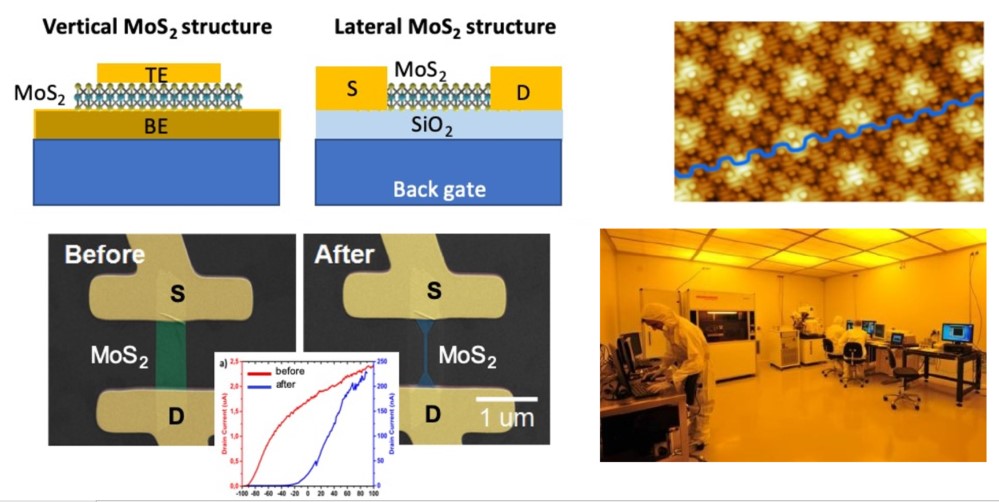RESEARCH PROGRAMMES
P2: Fundamental properties of 2D materials
P5: Solid state quantum devices for information technologies
RESEARCH SUPERVISOR(S)
Dr. Mariela Andrea Menghini
Research Group website: https://www.imdeananociencia.org/home-en/people/item/jose-luis-vicent-lopez
Prof Daniel Granados Ruíz
Research Group website: https://nanociencia.imdea.org/quantum-nanodevices/
Dr Manuela Garnica
Research Group website: https://nanociencia.imdea.org/nanoscale-imaging-of-2d-materials/
RESEARCH TOPIC DESCRIPTION
Our lives are more than ever transformed by the advances in nanotechnology driven by the discovery of new functional materials leading to the development of faster, smaller and smarter devices.
The discovery of graphene has spurred the research in a myriad of 2D materials (2DMs) due to their unique electronic, optical, mechanical, and thermal properties. There are several potential applications for 2D materials, such as electronics, optoelectronics, energy storage, catalysis, and sensing. For example, Transition Metal Dichalcogenides (TMDs) have shown promise in building ultra-thin, flexible, and high-performance transistors.
Research on 2D materials is still a relatively young field of research, with ongoing efforts to discover and characterize new materials, understand their properties, and develop practical applications. For example, memristive behavior in 2D materials is a topic of great actual interest. Although different type of memristive response has been reported in many 2DMs, there is still a lack of a full understanding of the relevant mechanisms that drive this phenomenon. Memristors are materials that have the capacity of “remembering” the electrical charge that previously flowed through them. The resistive switching of memristive materials is at the base of the ReRAM (Resistive random-access memory) technology. More recently, these materials have attracted much attention due to their potential for neuromorphic computation.
The aim of the proposed research is to design, fabricate and characterize memristive devices based on 2DMs. For this, a combination of thorough structural and electrical characterization including the use of local probes and nanostructuring/doping techniques will shed light on the microscopic origin of the resistive switching in 2DMs. This will in turn allow the tuning of the electrical behaviour for different applications such as quantum metrology and neuromorphic computation.
POSITION DESCRIPTION
The candidate should have a PhD in Physics, Physical-Chemistry, Material Science or in a closely related field of science. An ideal candidate will have previous experience in: condensed matter physics, quantum transport, surface science, quantum materials and/or nanodevices. Practical skills on electrical characterization, ultra-high vacuum techniques, scanning probe microscopies, 2D materials and/or nanofabrication processes will be an advantage for the development of the project. Candidates with a strong publication record and a systematic research attitude are encouraged to apply. Furthermore, the ability to work on an interdisciplinary topic and international environment, analytical but creative thinking and effective communication skills are also of importance.
PARTNER ORGANIZATIONS
The offered research project will include 2-6 months placement at Forschungszentrum Jülich (Peter Grünber Institute, Prof. Ilia Valov) and/or at University of Hamburg (The Center for Hybrid Nanostructures, Prof. Robert Blick) where the PD will be trained and mentored in technical skills that will complement their research at IMDEA Nanociencia. Collaborations with other international institutions, including short stays, are foreseen within the umbrella of the EU EMPIR project MEMQuD: Memristive devices as Quantum Standard for Nanometrology.

